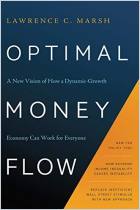Acesse a sua conta getAbstract para obter o resumo!

Acesse a sua conta getAbstract para obter o resumo!
Marios Karabarbounis, Marianna Kudlyak and M. Saif Mehkari
How Much Consumption Responds to Government Stimulus
FRBSF, 2018
Sobre o que é?
The fiscal stimulus of 2009–2012 had some surprising impacts on the overall US economy.
Recommendation
Policy makers can wield multiple types of government stimulus: tax cuts, transfer payments and direct spending into the economy. However, some programs drive greater economic activity than others. Economists Marios Karabarbounis, Marianna Kudlyak and M. Saif Mehkari assess the specific efficacy of direct spending via federal contracts under the 2009 American Recovery and Reinvestment Act. getAbstract recommends this eye-opening report to economists, policy experts and anyone interested in the effects of government spending on the economy.
Summary
About the Authors
Marios Karabarbounis is an economist at the Richmond Federal Reserve. Marianna Kudlyak is a research adviser at the San Francisco Fed. M. Saif Mehkari is an associate professor of economics at the University of Richmond.


















Comment on this summary